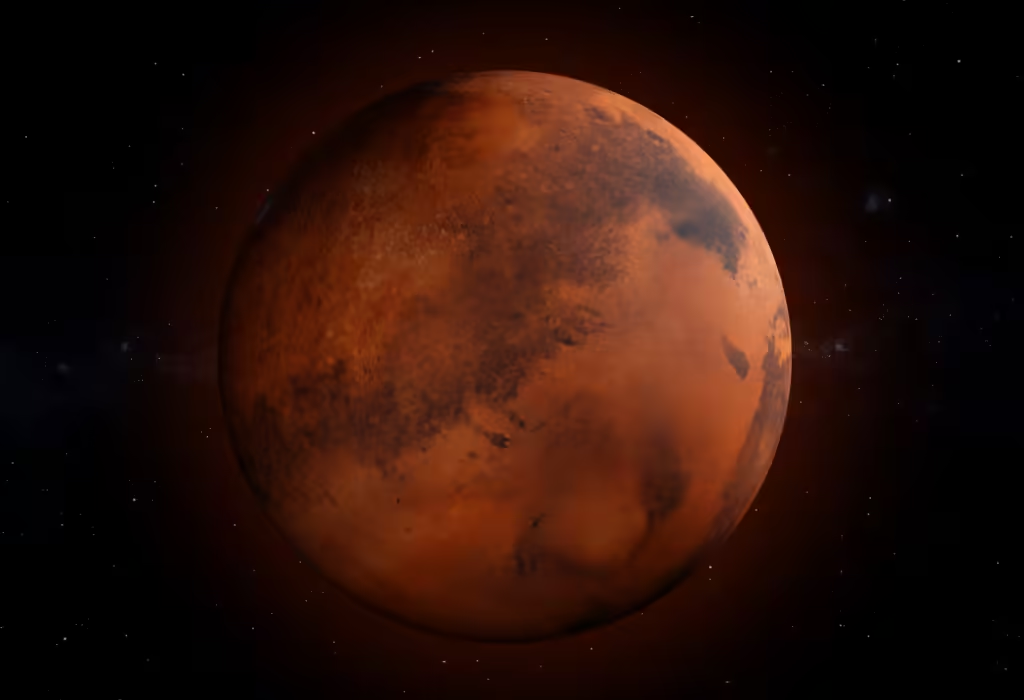Mars is more than just a planet in our solar system — it’s a symbol of discovery and ambition. Known as the “Red Planet,” Mars has been a focus of space agencies and scientists, drawing in explorers from across the world. As one of our closest planetary neighbors, this planet offers the chance to study a world that may once have had liquid water and, potentially, life. The knowledge we can gain from exploring Mars is invaluable, not only for science but for humankind’s future in space.
Mars Mission Timeline
Humanity’s journey to Mars has been decades in the making. Beginning with early probes in the 1960s, the exploration of Mars has evolved into a well-planned and coordinated effort involving multiple nations and agencies. Mariner 4, launched in 1965, provided humanity’s first close-up images of this planet, revealing a barren, cratered landscape. The Viking missions of the 1970s marked the first successful landings, providing groundbreaking data on Martian soil. Recent missions, like Curiosity and Perseverance, have continued this legacy, equipped with advanced technology to further explore and analyze Mars.
The Challenges of Reaching Mars
Traveling to Mars is no simple task. The planet is approximately 140 million miles away from Earth, and the journey typically takes between six to nine months. During this time, spacecraft must navigate a vast expanse of space, contending with challenges such as cosmic radiation and the psychological effects of long-duration spaceflight.
The Martian environment poses additional risks. With average temperatures around minus 80 degrees Fahrenheit and a thin atmosphere composed mostly of carbon dioxide, the planet is inhospitable to human life. Ensuring the safety of astronauts during future missions requires extensive planning and robust technology.
Pioneering Mars Missions
NASA, ESA, Roscosmos, and CNSA have all contributed to Mars exploration. Each mission builds on the last, enhancing our knowledge and paving the way for future endeavors. The recent Tianwen-1 mission exemplifies the collaborative spirit of exploration.
Role of Innovative Technologies
he future of Mars exploration is heavily reliant on innovative technologies. Advances in propulsion systems are enabling faster travel times. For instance, nuclear thermal propulsion is being researched for future missions, promising to shorten the journey to Mars significantly.

Robotics also play a crucial role. Autonomous rovers equipped with sophisticated sensors can analyze Martian soil and climate data.
Mars Rovers: How They’re Transforming Planetary Science
Rovers are often the stars of Mars missions. Curiosity has been roaming the Martian surface since 2012, conducting geological studies and analyzing samples for evidence of past water activity. Meanwhile, the moxie experiment equipped on Perseverance aims to convert Martian carbon dioxide into oxygen, a vital resource for future human exploration.
These rovers operate with a degree of autonomy, enabling them to navigate treacherous terrain and conduct experiments without real-time human control.
Mars Orbiters and Landers
Orbiters and landers play a crucial role in Mars exploration. They provide detailed maps of the Martian surface, helping scientists identify areas of interest for further study. Landers like InSight measure Mars’s seismic activity, offering clues about the planet’s interior structure. Working together, orbiters and landers give us a complete picture of Mars, from its surface to its core.
The Role of AI and Robotics
Robotics and artificial intelligence are critical in overcoming the challenges of Mars exploration. Autonomous systems allow rovers to travel independently across rough terrain, while AI analyzes the vast data these missions generate. Robotics also helps in sample collection and handling, tasks too delicate or risky for humans. Together, AI and robotics bring us closer to realizing human missions to Mars.
Private Sector Involvement
The private sector plays an ever-growing role in space exploration. SpaceX has ambitious plans for Mars, with its Starship program designed to carry humans to the Red Planet. Other companies like Blue Origin and Boeing are developing technology that could support these efforts. The combined efforts of government and private industry are accelerating the race to this planet.
Future Missions
Future Mars missions are set to push boundaries even further. NASA and ESA are planning a Mars sample-return mission, while other agencies explore new landing sites and resource extraction methods. These upcoming missions are designed to gather crucial data, setting the stage for human exploration and, eventually, colonization.
Mars in Popular Culture
As Mars gains attention in science and exploration, it also has a unique place in pop culture. The name “Mars” isn’t just linked to space; it’s also iconic in music, represented by popular artists like Bruno Mars and Mick Mars.
- Bruno Mars: This Grammy-winning singer-songwriter has captivated audiences worldwide with hits like Uptown Funk and Just the Way You Are. Known for his unique style and energetic performances, Bruno Mars adds a different kind of excitement to the Mars name.
- Mick Mars: Guitarist for the legendary rock band Mötley Crüe, Mick Mars has influenced rock music for decades. With his distinct guitar riffs and edgy persona, Mick Mars brings a rock ‘n’ roll vibe to the Mars legacy.
Bruno Mars Net Worth
With a successful career spanning more than a decade, Bruno Mars has built significant wealth. His net worth, estimated to be around $175 million, reflects his chart-topping hits, concert tours, and lucrative endorsements. Bruno planet’s success story adds a pop-culture layer to the fascination with Mars, making the name synonymous with not just space exploration but also entertainment and success.

